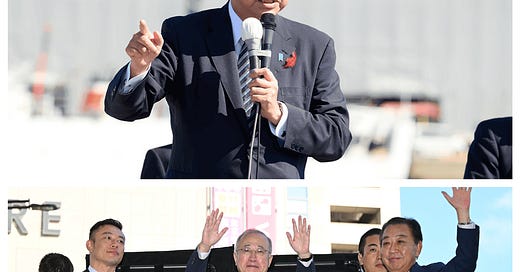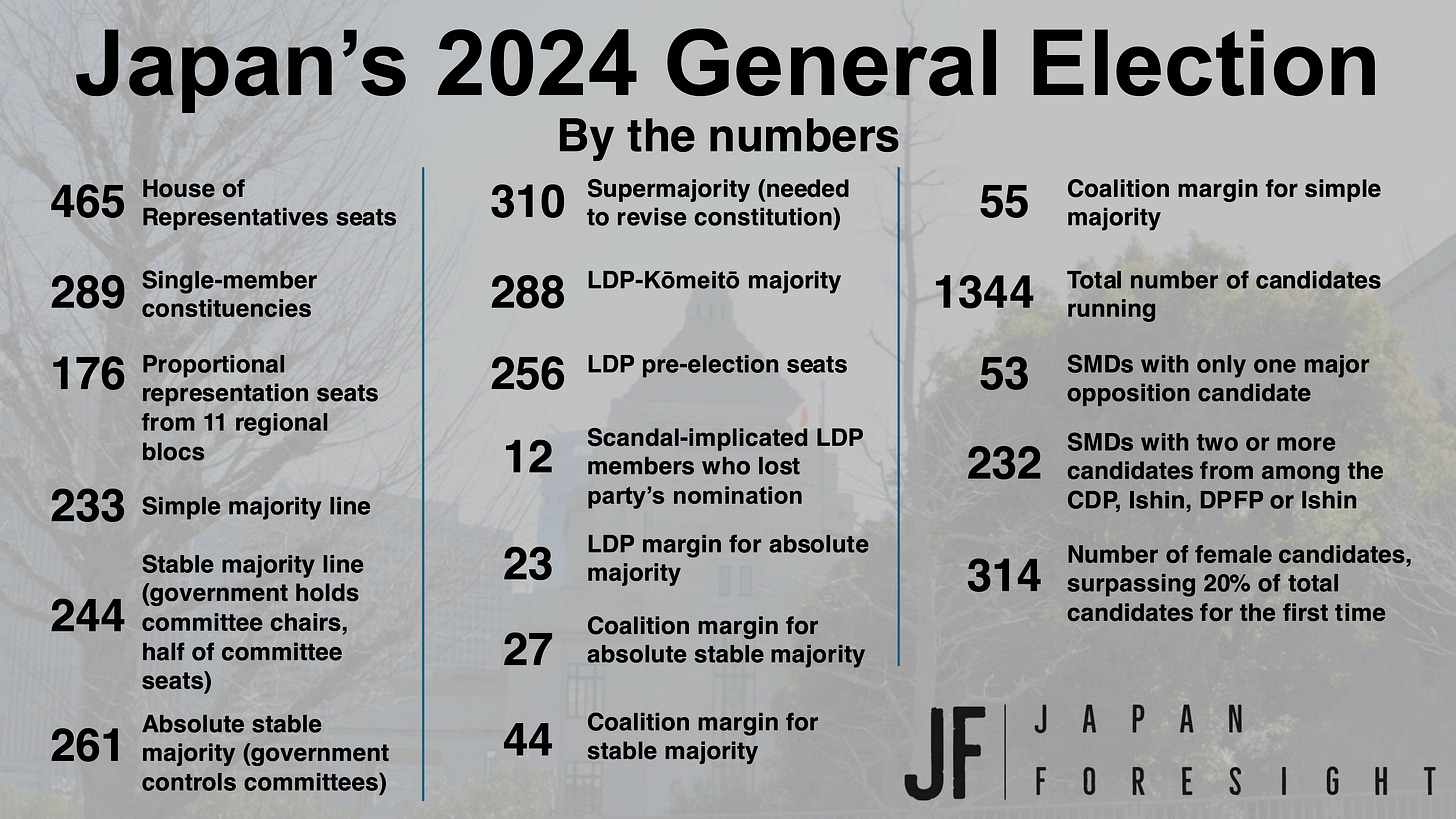The general election begins
What you need to know about Japan's fiftieth general election
Thank you for reading Observing Japan. This post is available for paying subscribers.
If you are looking for timely, forward-looking analysis of the stories in Japans’s politics and policymaking that move markets, I have launched a new service through my business, Japan Foresight LLC. For more information about Japan Foresight’s services or for information on how to sign up for a trial or schedule a briefing, please visit our website or reach out to me.
I am preparing a guide and forecast for the 2024 general election, similar to my 2021 guide. This year’s edition will be shared with all paying subscribers; free subscribers will have the option to purchase it for a nominal fee.
The campaign for the 27 October general election formally began on Tuesday, 15 October. Here is everything you need to know about Japan’s fiftieth general election, which will determine whether Prime Minister Ishiba Shigeru will be able to govern effectively or whether the Japanese political system has in fact entered an era of greater political competition and, potentially, weaker governments.
The electoral system
Japan’s 465-seat House of Representatives is elected via a mixed-member majoritarian (MMM) system, in which 289 members are elected from single-member districts (SMDs) decided by first-past-the-post voting and 176 members are elected from eleven proportional representation regional blocs, with the number of seats in each bloc determined by population, ranging from 28 in the Kinki regional bloc (which includes Osaka and the Kansai region) to 6 in the Shikoku regional bloc.
Population changes since the 2021 general election have led to adjustments in district boundaries, including the elimination of ten districts and the creation of ten new districts. Miyagi, Fukushima, Niigata, Shiga, Wakayama, Okayama, Hiroshima, Yamaguchi, Ehime, and Nagasaki prefectures all lost one SMD each. Meanwhile, Tokyo gained five, Kanagawa two, and Chiba, Saitama, and Aichi prefectures each gained one. PR blocs were also adjusted, with Tokyo gaining two and the Minami-Kantō bloc (Chiba, Kanagawa, and Yamanashi prefectures) gaining one, and the Tohoku, Chugoku, and Hokuriku-Shinetsu blocs each losing one.
Japan’s electoral system allows candidates to run simultaneously in SMDs and on PR lists, resulting in the “revival” of defeated candidates via PR. (These winners are sometimes called “zombies.”) A losing candidate’s position on their party’s list depends on the ratio of the margin of defeat, e.g. a candidate who finishes a close second with, say, 95% of the votes of the winner in their district will be ranked ahead of candidates who lost by larger margins. Generally, most parties will use this system. However, during this campaign, Ishiba announced that LDP candidates implicated in the kickback scandal will not be included on the party’s PR lists, affecting 34 candidates in total. (Another three, including Sugita Mio, who were due to run solely as PR candidates, will not be running as LDP candidates at all; one, Uesugi Kentarō, will run as an independent, while Sugita is considering an upper house bid next year.) Ishiba and several other party leaders have also said that they will not be included on the party’s PR lists. As a result, the LDP is running more standalone PR candidates, 76 compared with 59 in 2021.
Voting
Voters cast two votes, one for an individual candidate in their SMDs and one for a political party in the PR bloc. Voters are still required to write out candidate names by hand on a blank ballot, although Japanese democracy may be gradually moving towards pre-printed ballots or to electronic voting.
Meanwhile, early voting will begin on Wednesday, 16 October and continue through Saturday, 26 October. On Sunday, 27 October, polls will open at 7:00am and close at 8:00pm. In 2021, 16,624,813 votes cast their ballots early, more than 28% of the eventual 58,901,616 votes cast in SMDs.
Keep reading with a 7-day free trial
Subscribe to Observing Japan to keep reading this post and get 7 days of free access to the full post archives.





